When to sow lawn grass?
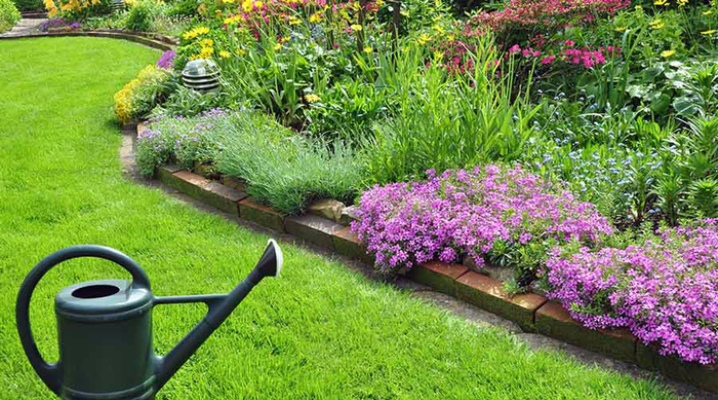
When is it time to sow lawn grass, at what temperature does it grow best? These questions are often asked by site owners looking to get a well-kept green lawn under their windows. The timing of the seed setting really matters a lot. In order to figure out whether it is possible to sow a lawn in the spring or plant seeds correctly in the fall, it is worth evaluating the advantages and disadvantages of each of these options.

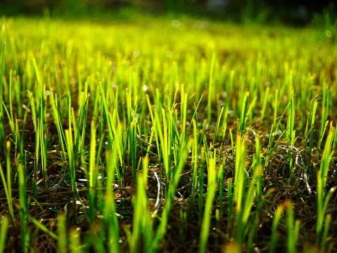
Features of autumn planting
The timing of planting the lawn on the site is of great importance for the subsequent successful cultivation of the selected plants. The fact is that herbs in this case are selected individually and carefully enough, they require the same attention as cultivated plants. It is not surprising that the timing of planting has to be determined taking into account the characteristics of the climate of the region and other external factors.
Of course, you can sow lawn grass throughout the warm season, but most summer residents prefer to do this in the fall, with an average temperature of about +15 degrees.
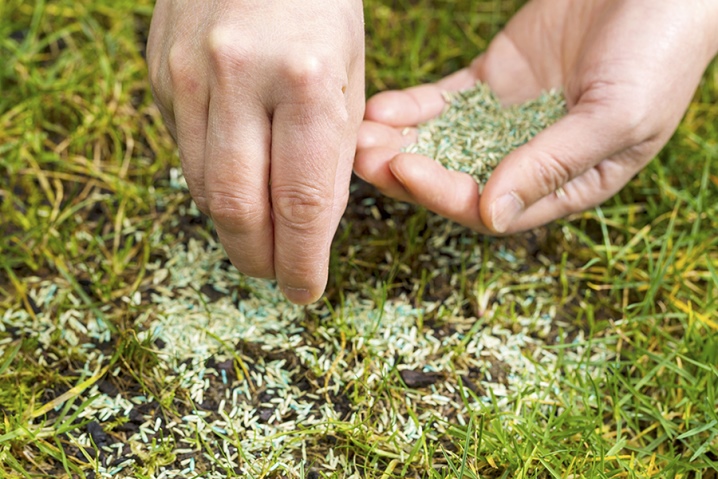
The optimal time for planting a natural, non-rolled grass carpet is September. When sown at the beginning or middle of the month, the root system will already be sufficiently developed by the winter cold. Accordingly, frost will not do much harm to plants. The September sowing easily solves the problem of creating the necessary microclimate, warm and humid, there is no need to additionally water the seedlings - the precipitation is enough for them.

Before planting in autumn, it is important to properly prepare the soil. The relief will have to be leveled, otherwise later, when cutting, there will be difficulties with height differences and bumps. The soil must pass water well, but at the same time be dense enough, otherwise it will not be able to adapt for walking, playing, relaxing on the lawn.
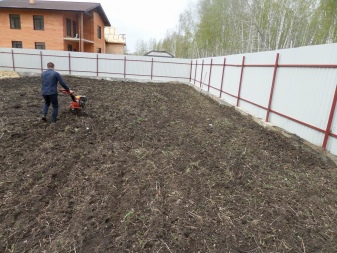
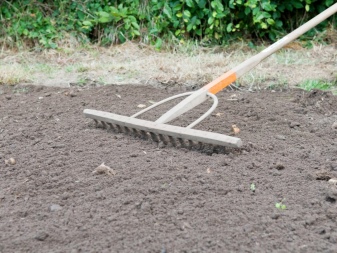
The order of the autumn planting of the lawn will be as follows.
- Garbage removal, site clearing. If there are stumps, plant roots, shrubs on the territory of the future lawn, they will have to be uprooted.
- Alignment. It begins with the removal of the fertile layer from the surface, it is temporarily folded into piles. Then a special mesh or twine is pulled, the soil for the backfill is taken from the deposited stocks. After the relief turns out to be perfectly flat, the site is rolled away, checked again for elevation differences, and, if necessary, supplemented with soil.
- Drainage. It is needed if the soil is very dense and clayey, after rain puddles stagnate. In this case, the soil is selected not by 20 cm, but by 40, a sand and gravel cushion is laid down, and then a fertile layer is laid.
- Digging and removing weeds. If you have a cleared area for your lawn, you can simply remove the roots by hand. With a significant amount of weeds, more serious measures may be required. Herbicides will help to remove dense vegetation - they treat the entire area intended for sowing a lawn. Spraying is carried out twice, with a break of a month, so you need to start preparing in advance, even in the summer.
- Fertilization. Top dressing is an important part of preparing the soil for the lawn. It is imperative to add organic fertilizers - manure or humus, as well as a mineral complex. After that, the soil must be rolled again, compacting its surface, and left for a while.
- Sowing seeds. It starts with lightly loosening the topsoil.Then the entire area is divided into sectors or squares of 1 m2. For individual areas, their own seed rate is measured. Sowing is carried out sequentially, in the longitudinal and transverse directions. In conclusion, you need to walk around the site with a rake, sprinkling the seeds.
- Rammer. After the entire area is evenly sown, you need to roll the soil, seeding the seeds to a shallow depth. This will exclude the displacement of the planting material, its washing out, plundering by birds.
- Watering. The daily rate should be about 6-10 liters per 1 m2. In rainy weather, these measures will be overkill. Watering continues until the seedlings reach a height of 6 cm.

Autumn planting of the lawn can be carried out at a later date. In this case, it will be necessary to act according to a strictly defined scheme.
Sowing in late autumn
The end of October and the beginning of November can also be considered as a period for sowing a lawn. This scheme is suitable for regions with stable winter temperatures, without sudden thaws and other changes. Do not expect 100% germination at late autumn planting. A significant increase in the seeding rate - by 1.5-2 times will help to reduce losses. Planting is carried out at an ambient temperature of no higher than +3 degrees Celsius, otherwise the seeds will have time to germinate.

Among the reasons for choosing autumn sowing before frosts, the following can be distinguished.
- Natural stratification. The seeds are hardened, they tolerate frost better, and their germination is stimulated.
- Getting moisture in the spring. The melting of snow and the rise of groundwater allow during the awakening of plants to compensate for the lack of moisture in arid regions.
- Early germination. The sprouts will appear 1.5 months earlier than with spring sowing, you do not have to wait out the thaw to start planting.
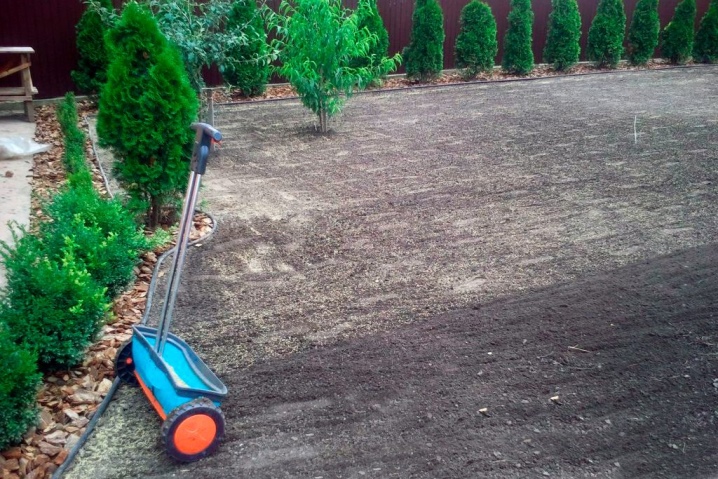
Sowing a lawn in autumn is the best option for obtaining a high-quality green carpet. It is this period that is best suited for forming a lawn without haste, with careful preparation of the site. In general, autumn has almost no drawbacks - the only danger is early frosts.
The advantages include the absence of weeds, a comfortable microclimate and the level of soil moisture.
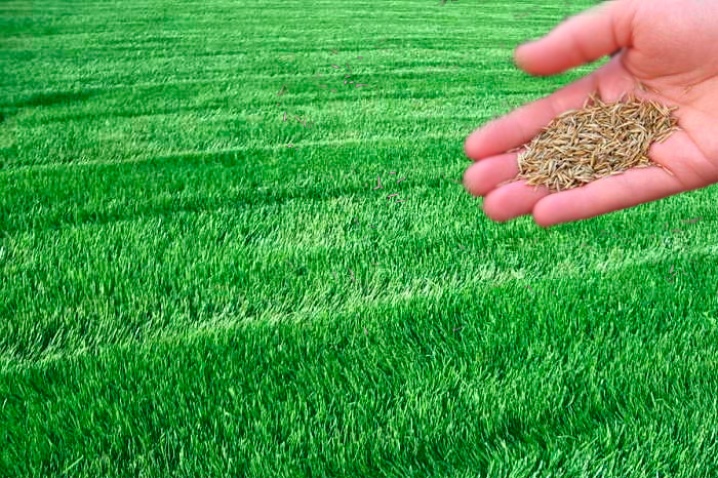
We plant at other times of the year
Sowing a lawn is possible not only in the fall. You can also sow it correctly in the country in summer or spring. Depending on the climatic zone, it is worth focusing on average temperatures. For example, in the Urals, the lawn grows better when sown in late April or early May. In the middle lane, it is recommended to start planting in mid-spring. In the south, you can start sowing at the beginning of March, in the north-west you will have to wait until May.
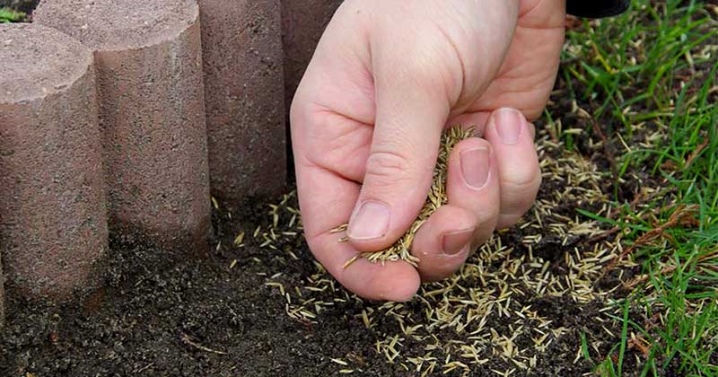
Summer
Sowing lawn grass in the summer is possible, but undesirable, especially for southern regions with a hot climate. In the northwestern regions, you can choose to plant in early June and late August without fear of the plants being affected by the heat. In addition, in the summer, you need to think carefully about the watering process. It must be regular and abundant - it would be wiser to install an automatic system with sprinklers.
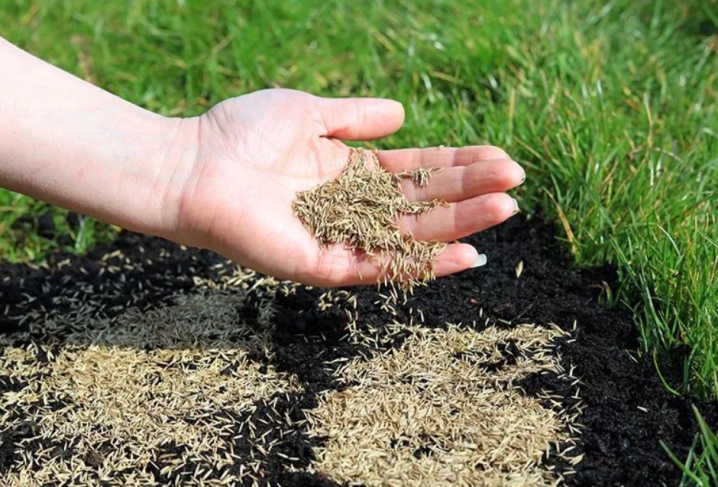
In the spring
When planting a lawn with seeds in regions with unstable winter temperatures, the best time for this is spring. At the end of April, it is already warm enough, the soil is saturated with moisture, but there is no too active sun that can destroy young shoots. Spring planting is well suited for turf mixtures with different maturations. Over the summer and autumn, the grass will have time to get stronger, which means it will well endure the first winter.
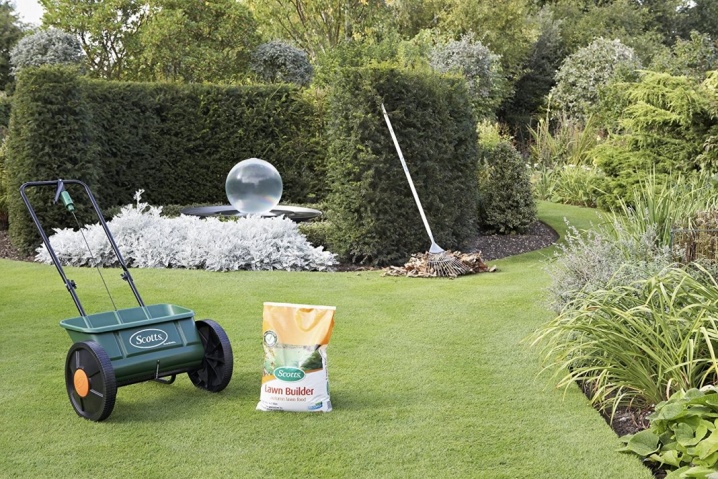
Among the obvious advantages of spring sowing are the following.
- High seed germination. Since there are no risk factors in the form of frost and sizzling summer heat, losses will be minimal. There is no need to artificially overestimate the number of seeds per 1 m2.
- Long daylight hours. This is very important at the initial stage of plant development.In the fall, even with early planting, lighting may not be enough.
- High supply of nutrients in the soil. It contains enough moisture and other necessary components to stimulate growth at the initial stage.
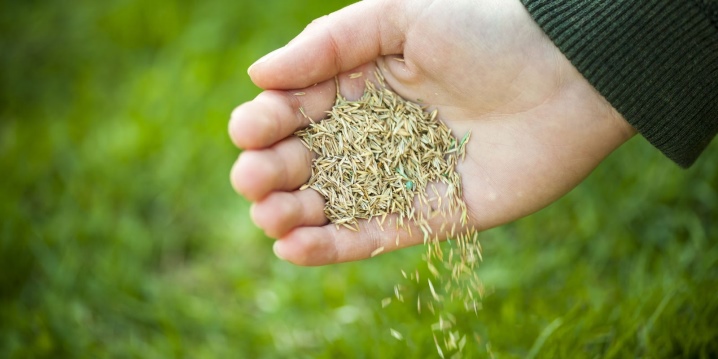
There are also disadvantages that should also be considered when choosing a suitable sowing period. For example, in regions with severe spring frosts, the lawn can suffer from cold weather, especially if they begin already when the first shoots appear.
In addition, during this period of time, not only cultural plantings are actively growing, weeds also sprout abundantly. This can be dangerous for young shoots with an underdeveloped root system.
You can start sowing in the spring after the soil warms up to +10 degrees, and its surface dries up. In this case, when moving on the ground, there will be no deep marks on it. It is important that the drifts are completely gone. If soggy areas remain on the site, it is worth laying wooden bridges, then it will be safe to move along the surface.
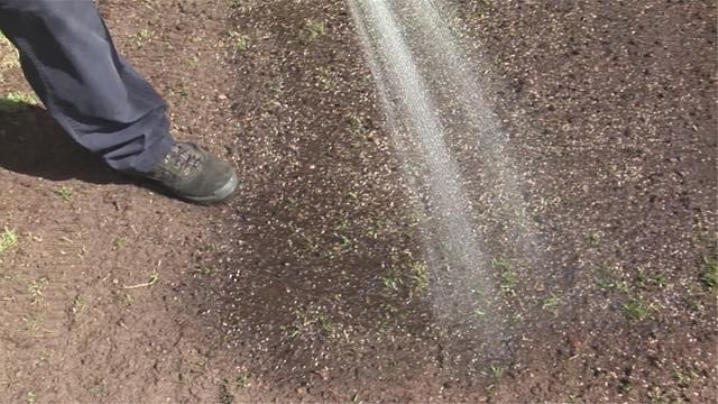
Recommendations
Sowing your lawn is definitely a challenge, but it's just as important to follow the rules after planting. For example, take into account the features and purpose of the lawn. It is possible to walk on sports and universal lawns after sowing no earlier than 3-4 months, when the sprouts are sufficiently strong. English and Moorish-style lawns are generally not suitable for such use - their role is only in decorating the landscape. Walking on them is strictly prohibited.

When planting before winter, it is worth taking care of young shoots with the onset of warm days. To do this, you will have to take the following measures.
- Break the ice, remove the snow as early as possible. This will avoid excessive flooding of the site.
- As the grass gains density, it is necessary to work out with a rake or a scarifier, further improving the flow of oxygen to the roots.
- After the first mowing, the lawn is fed.

The growth rates have to be taken into account as well. For example, bluegrass takes a long time to develop enough lawn density. If you want to get a beautiful lawn in a short time, it would be more wise to choose plants with a high growth rate. When preparing the soil for sowing grass, mineral fertilizers are preliminarily introduced into the soil.
Sowing immediately after this is prohibited. You need to wait at least 1 week, otherwise the nutrients simply will not have time to penetrate deeply into the soil.

A few weeks after sowing, the lawn will need to be taken care of again. At this time, weeding is carried out, which can interfere with the rooting of cultivated plants. Perennial pests must be removed along with the root. Upon completion of manual weed removal, the lawn area is compacted again, then moistened. If noticeable depressions have formed on the site, it is worth making sure that they are filled with a mixture of sand and fertile soil.
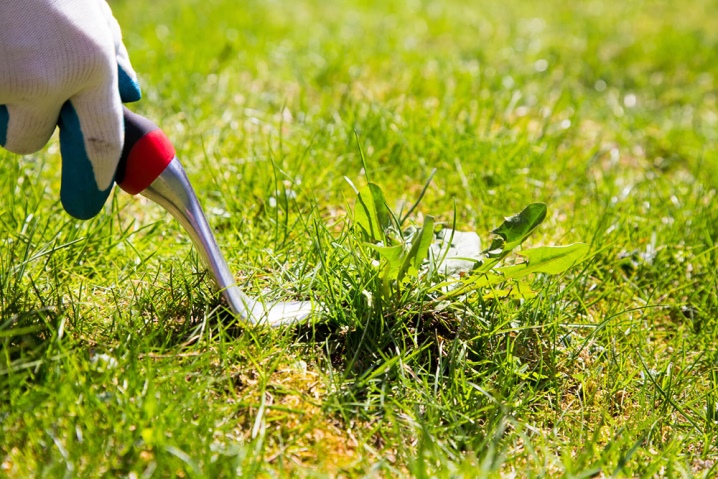
There are some other recommendations worth considering.
- Experienced gardeners choose autumn for planting, and planting begins at the end of September or October.
- In summer and spring, the soil must be kept “under steam”. To do this, the site is dug up, covered with a special non-woven material to destroy weeds. Only then can you start sowing.
- When planting seeds, the greatest density of their placement should fall on the edges. It is here that the losses at emergence are highest.
- It is worth leaving a stock of seed. With uneven sprouting, it will always be possible to fill in the gaps.
Considering all these recommendations, you can achieve excellent results when you first plant your lawn in any period of the year.
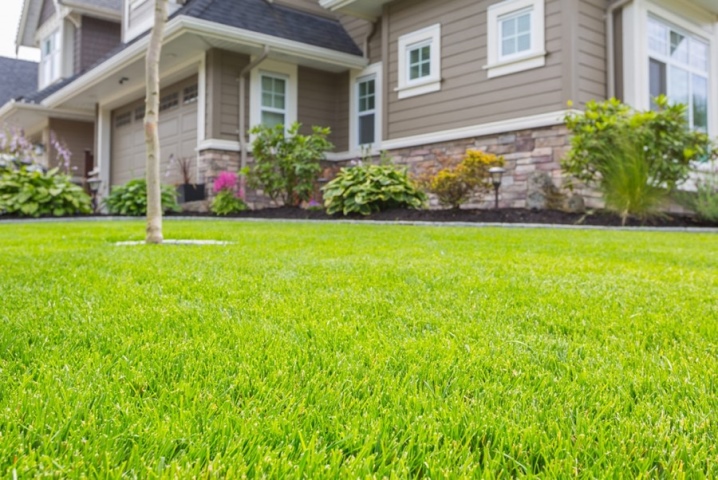
For information on when to sow lawn grass, see the next video.



































































The comment was sent successfully.